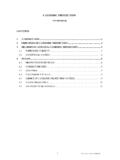Transcription of TM 5-811-7 Electrical Design, Cathodic Protection
1 TM 5-811-7 TECHNICAL MANUALELECTRICAL design , Cathodic PROTECTIONHEADQUARTERS, DEPARTMENT OF THE ARMY22 APRIL 1985i*TM 5-811-7 Technical Manual HEADQUARTERSDEPARTMENT OF THE ARMYNo. 5-811-7 WASHINGTON, 22 April 1985 Electrical design , Cathodic PROTECTIONP aragraph TO Cathodic 1-1 1-2 1-3 1-1 Cathodic 1-5 1-1 Types of Cathodic Protection Protection DESIGNR equired 2-1 2-1 Determining the type and design of Cathodic Protection 2-2 2-3 APPENDIXASOIL RESISTIVITY A-1 BCURRENT REQUIREMENT B-1 CEXAMPLES OF GALVANIC Cathodic Protection C-1 DEXAMPLES OF IMPRESSED CURRENT Cathodic Protection D-1 ESPECIFICATIONS FOR CERAMIC E-1 FRECTIFIER CURRENT F-1 BIBLIOGRAPHY BIBLIO-1 GLOSSARY GLOSS-1 LIST OF FIGURESF
2 Igure Page1-1 corrosion of a pipeline due to localized anode and cathode 1-11-2. Galvanic and impressed current systems for Cathodic 1-22-1. design sequence for Cathodic Protection 2-3A-1. Wenner four-pin method for measuring A-1A-2. Soil box for soil resistivity A-2B-1. Current requirement test on B-1C-1. Galvanic anode Cathodic Protection for hydrant refueling C-1C-2. Galvanic anode Cathodic Protection for underground steel storage C-4C-5. Layout of gas piping in residential C-5D-l. Cathodic Protection system for gas D-lD-2. Impressed current Cathodic Protection for heating conduit D-4D-3. Cathodic Protection for black iron hot water storage D-7D-4.
3 Fringe factor for stub D-9D-5. Dimensions for an elevated steel water D-10D-6. Cathodic Protection for tanks using rigid-mounted button-typeanodes and platinized titanium D-12D-7. Segmented elevated tank for area D-13D-8. Anode spacing for elevated steel water D-15D-9. Anode suspension arrangement for elevated steel water D-17D-10. Equivalent diameter factor for anodes in a circule in water D-18_____This manual supersedes Sections VII, VIII, and IX of TM 5-811-4, 1 August 5-811-7 LIST OF FIGURES (CONT d)ParagraphPageD-l steel water tank showing rectifier and anode hole and anode suspension detail for elevated water anode suspension detail for elevated water anode potential versus distance from foreign interference OF of soils on steel based on soil current density requirements for Cathodic Protection of uncoated and dimensions of selected high-potential magnesium-alloy and dimensions of selected circular high-silicon chromium-bearing cast iron functions (K) for impressed current Cathodic Protection anodes where L is the effectiveanode length and d is the anode/backfill 2-6 Anode paralleling factors (P) for various numbers of anodes (N) installed in area of liquid fuel for anode for finding outside area of anode size factor If).
4 Potential factor (y).. for finding anode for finding steam conduit area: heat distribution for finding condensate return conduit area: heat distribution area: heat distribution division: heat distribution data: commonly used HSCBCI 5-811-71-1 CHAPTER 1 INTRODUCTION TO Cathodic small section of a pipeline may be anodicThis manual presents design guidance for cathodicprotection because of a potential difference between theDepartment of Transportationanode and cathode. That is, the anode potential isSuperintendent of Documents, Gov-more negative than the cathode potential, and thisernment Printing Office, Washington, DCdifference is the driving force for the corrosion20402current. The total system anode, cathode, electro-Transportation of Natural and Other Gas bylyte, and metallic connection between anode andPipeline: Minimum Federal Safety Stan-cathode (the pipeline in fig 1-1) is termed adards, Subpart 1 - Requirements Register, corrosion 36, No.
5 126 (June 30, 1971). Association of corrosion Engineers(NACE), Box 218340, Houston, TX77084 Standard RP-01-69 Control of External (1972 revisionCorrosion on Under-ground or SubmergedMetallic Piping SystemsStandard RP-02-72 Direct Calculation ofEconomic Appraisalsof corrosion is an electrochemical process in which acurrent leaves a structure at the anode site, passesthrough an electrolyte, and reenters the structure atthe cathode site as figure 1-1 shows. For example,because it is in a soil with low resistivity comparedto the rest of the line. Current would leave thepipeline at that anode site, pass through the soil,and reenter the pipeline at a cathode site. Protection is a method to reduce corro-sion by minimizing the difference in potentialbetween anode and cathode. This is achieved byapplying a current to the structure to be protected(such as a pipeline) from some outside enough current is applied, the whole struc-ture will be at one potential; thus, anode andcathode sites will not exist.)
6 Cathodic Protection iscommonly used on many types of structures, suchas pipelines, underground storage tanks, locks, andship of Cathodic Protection are two main types of Cathodic protectionsystems: galvanic and impressed current. Figure 1-2shows these two types. Note that both types haveanodes (from which current flows into theTM 5-811-71-2electrolyte), a continuous electrolyte from thezinc because of these metals higher potentialanode to the protected structure, and an externalcompared to steel connection (wire). These items current systems. Impressed currentessential for all Cathodic Protection Protection systems use the same system. A galvanic Cathodic pro-structure is protected by applying a current to ittection system makes use of the corrosive poten-from an anode. The anode and the structure aretials for different metals. Without Cathodic protec-connected by an insulated wire, as for the galvaniction, one area of the structure exists at a moresystem.
7 Current flows from the anode through thenegative potential than another, and corrosionelectrolyte onto the structure, just as in the galvanicresults. If, however, a much less inert object (thatsystem. The main difference between galvanic andis, with much more negative potential, such as aimpressed current systems is that the galvanicmagnesium anode) is placed adjacent to the struc-system relies on the difference in potential betweenture to be protected, such as a pipeline, and athe anode and structure, whereas the impressedmetallic connection (insulated wire) is installedcurrent system uses an external power source tobetween the object and the structure, the object willdrive the current, as figure 1-2b shows. Thebecome the anode and the entire structure willexternal power source is usually a rectifier thatbecome the cathode. That is, the new object cor-changes input power to the proper powerrodes sacrificially to protect the structure as shownlevel.
8 The rectifier can be adjusted, so that properin figure 1-2. Thus, the galvanic Cathodic protec-output can be maintained during the system s system is called a sacrificial anode cathodicImpressed current Cathodic Protection systemprotection system because the anode corrodesanodes typically are high-silicon cast iron orsacrificially to protect the structure. are usually made of either magnesium oras the galvanic Protection system, only theTM 5-811-72-1 CHAPTER 2 Cathodic Protection increases, the corrosion rate decreasesBefore deciding which type, galvanic or impressedcurrent, Cathodic Protection system will be usedand before the system is designed, certain prelimi-nary data must be dimensions of structure to be pro-tected. One important element in designing acathodic Protection system is the structure's phys-ical dimensions (for example, length, width, height,and diameter). These data are used to calculate thesurface area to be of structure to be protected.
9 Theinstallation drawings must include sizes, shapes,material type, and locations of parts of the structureto be isolation. If a structure is to beprotected by the Cathodic system, it must be elec-trically connected to the anode, as figure 1-2shows. Sometimes parts of a structure or systemare electrically isolated from each other by insula-tors. For example, in a gas pipeline distributionsystem, the inlet pipe to each building mightcontain an electric insulator to isolate inhousepiping from the pipeline. Also, an electricalinsulator might be used at a valve along the pipelineto electrically isolate one section of the systemfrom another. Since each electrically isolated partof a structure would need its own cathodicprotection, the locations of these insulators must circuits. All short circuits must beeliminated from existing and new Cathodic protec-tion systems. A short circuit can occur when onepipe system contacts another, causing interferencewith the Cathodic Protection system.
10 Whenupdating existing systems, eliminating short circuitswould be a necessary first history of structures in the the corrosion history in the area canprove very helpful when designing a Cathodic pro-tection system. The study should reinforce predic-tions for corrosivity of a given structure and itsenvironment; in addition, it may reveal abnormalconditions not otherwise suspected. Facilities per-sonnel can be a good source of information forcorrosion resistivity survey. A structure'scorrosion rate is proportional to the electrolyteresistivity. Without Cathodic Protection , as electro-lyte resistivity decreases, more current is allowed toflow from the structure into the electrolyte; thus,the structure corrodes more rapidly. As electrolyte(table 2-1). Resistivity can be measured either in alaboratory or at the site with the proper instru-ments. Appendix A explains the methods andequipment needed to complete a soil resistivitysurvey.


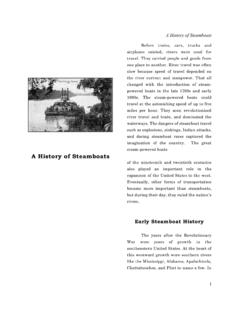
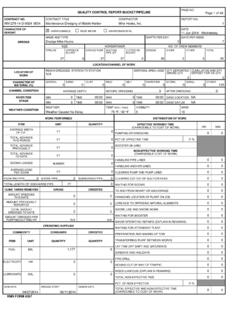
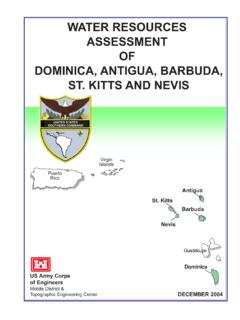


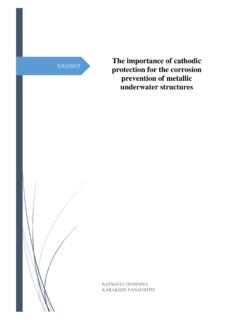

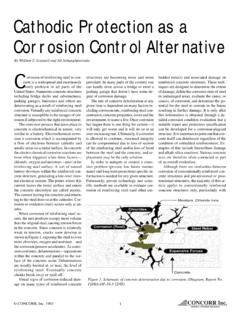
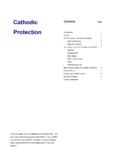
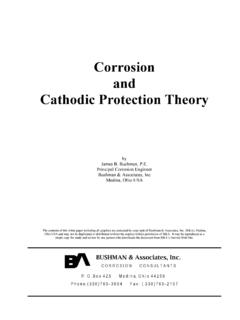



![Corrosion Protection.ppt [Read-Only] - University of Iowa](/cache/preview/1/c/f/9/2/e/d/5/thumb-1cf92ed5cf903dbf2b6cd3a840081a01.jpg)
